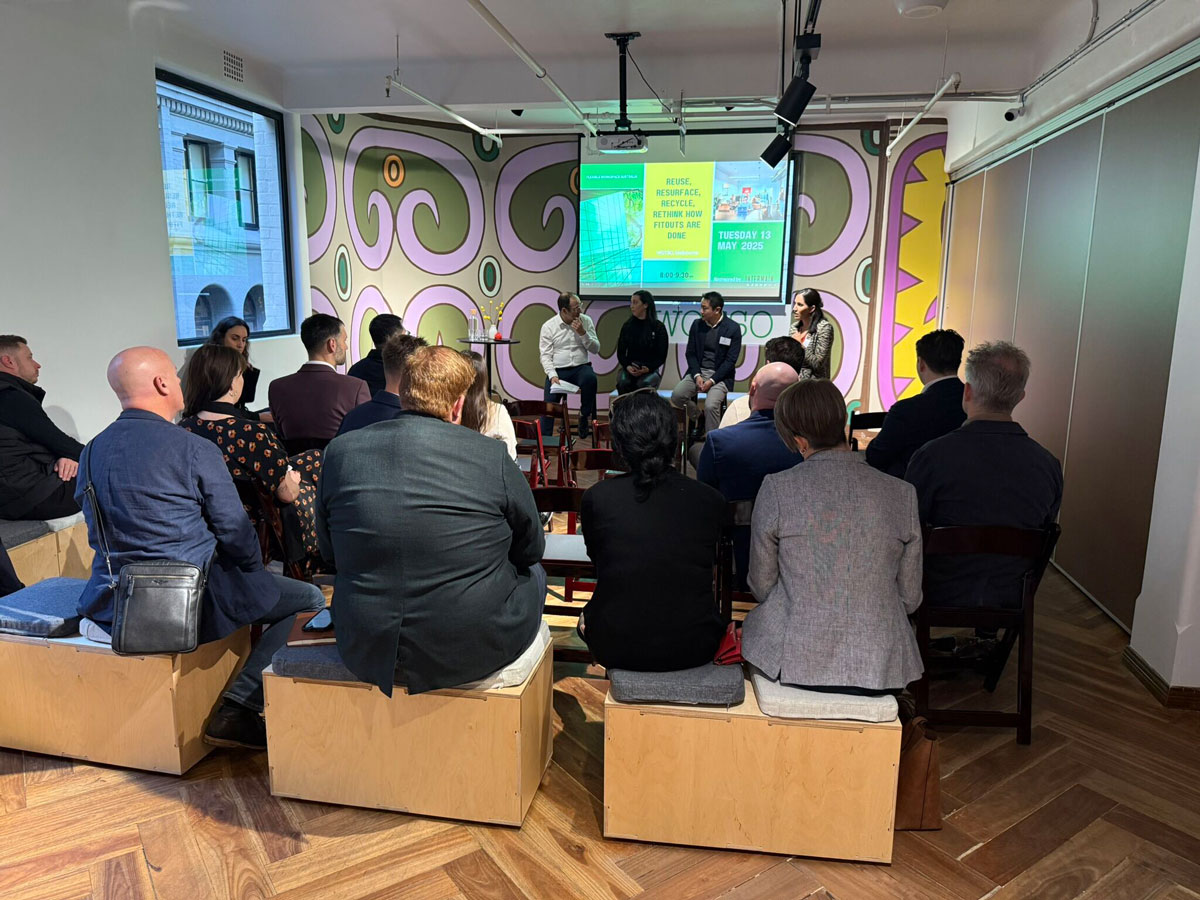Rethinking Fitouts: Why Reuse Must Start Early

As the property and construction industries sharpen their focus on sustainability, the way we think about fitouts is undergoing a fundamental shift. The move from a linear to a circular economy isn’t just about swapping materials—it’s about re-evaluating every stage of the process, from lease negotiation to demolition, with sustainability in mind.
This morning, our Creative Director Elizabeth Kirkland joined the panel at Flexible Workspace Australia’s event, Reuse, Resurface, Recycle: Rethink How Fitouts Are Done, held at WOTSO Melbourne. The event brought together developers, designers, and delivery partners to explore how our industry can embed reuse and resource-conscious thinking into the core of commercial fitout delivery.
Elizabeth spoke to the growing role of reuse in Intermain’s design strategy and the critical importance of timing. By embedding sustainability principles early, before design is finalised or leases are signed, project teams can unlock measurable benefits: reduced waste, lower costs, improved ESG performance, and more resilient outcomes for clients and communities alike.
Intermain’s top four tips for planning a more sustainable fitout:
1. Set clear drivers and align with the lease stage
Understanding the goals of a commercial fitout project from the outset allows for better alignment with lease conditions and smoother delivery. Whether the focus is on cost, ESG performance, or design flexibility, setting clear priorities early on helps avoid unnecessary costs and delays. A knowledgeable fitout partner can guide this process and help embed sustainability into every stage.
2. Start early with a reuse mindset
Early site audits can uncover value in existing materials and finishes before the strip-out begins. Once demolition is underway, opportunities for reuse are often lost. Intermain partners with organisations such as ALD Expert Demo, REVERT GROUP, and ReLove to assess salvageable assets, minimise landfill, support ESG targets, and reduce removal and procurement costs. This approach reduces environmental impact while supporting the circular economy in workplace design.
3. Plan for complexity in reuse
Reusing elements in a commercial fitout isn’t always simple. Legacy infrastructure, outdated materials, and landlord or compliance obligations can add complexity. These factors must be addressed early in the planning phase to ensure a smooth and sustainable build. With the right expertise, reuse becomes a design asset rather than a challenge.
4. Design fitouts to reflect ESG goals
If environmental performance is a key project objective, design decisions must reflect that intention. From specifying low-emission, recycled, or locally sourced products to planning for end-of-life reuse or recycling, ESG-led fitouts demand strategic thinking from the start.
Elizabeth closed the session by reinforcing that sustainable fitouts begin well before construction—ideally before the lease is signed. When sustainability is part of early-stage planning, it leads to better project outcomes, resilient spaces, and a meaningful contribution to circular design in the built environment.
Looking to deliver a sustainable fitout or reduce construction waste on your next project?
Get in touch to find out how Intermain’s early planning and reuse strategies can support your ESG goals.
